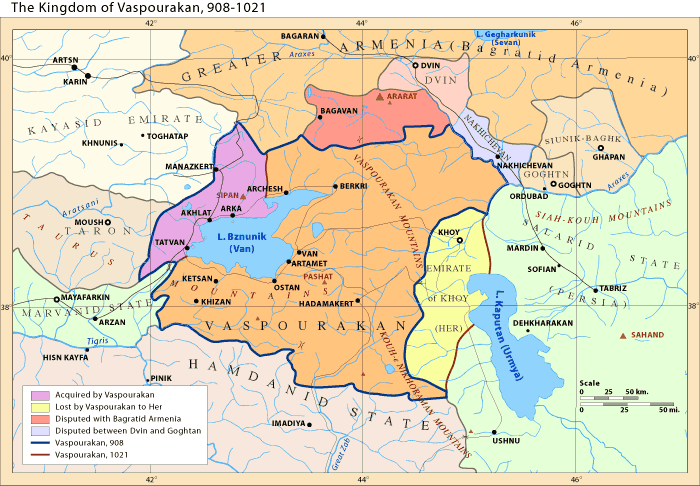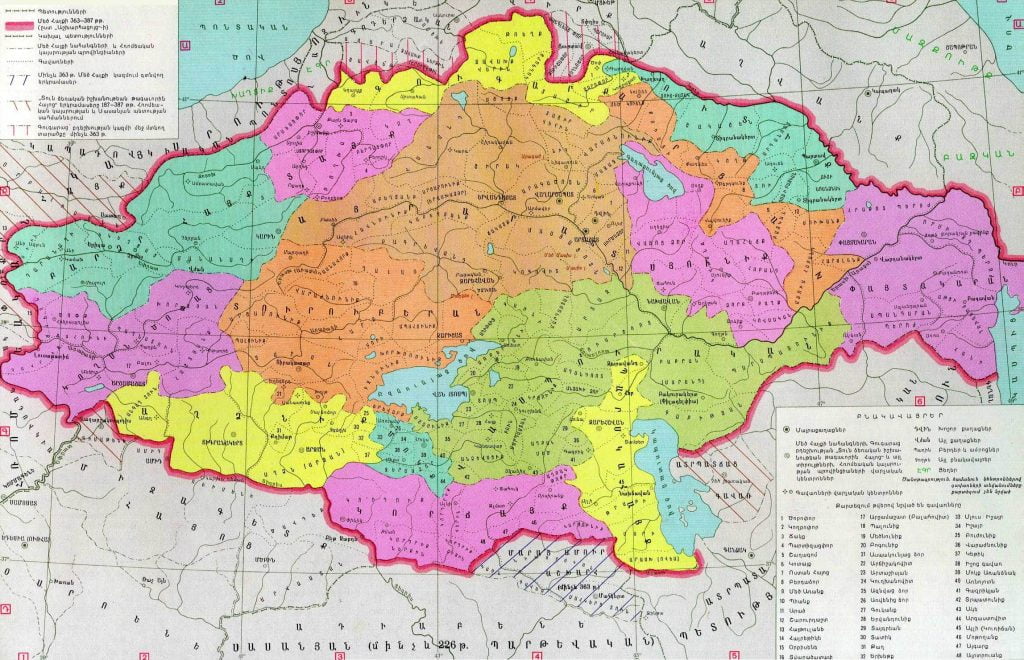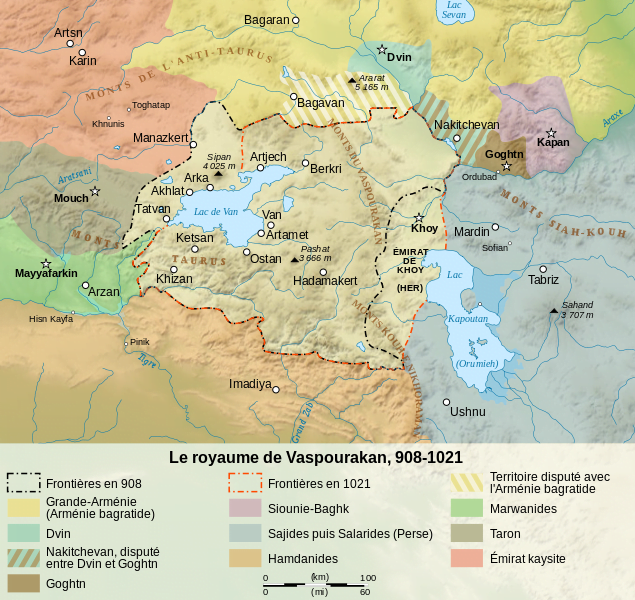The Kingdom of Vaspurakan (Վասպուրական) was one of the prominent Medieval Armenian kingdoms. This kingdom’s territory largely overlapped with the Vaspurakan province of Greater Armenia. Located in what is now eastern Turkey (Western Armenia) and northwestern Iran, the region is often considered the cradle of Armenian civilization due to its rich history and cultural significance.
History
The Vaspurakan was predominantly ruled by the Artsruni dynasty, which first established a principality in the area. In 908, the principality of Vaspurakan was elevated to the status of a kingdom. The kingdom spanned the lands between Lake Van and Lake Urmia (Kaputan) and remained under the suzerainty of the Bagratuni Kingdom of Ani, marking the beginning of its prominence.

The territory of the kingdom covered the regions between Lake Van and Lake Urmia, spanning an area of approximately 40,000 square kilometers. By the early 11th century, the population of Vaspurakan reached nearly one million.

Vaspurakan was elevated to the status of a kingdom in 908, when Gagik I of Vaspurakan was recognized King of Armenia by the Abbasids and at first was on their side, but soon he regretted and together with Ashot II defeated the Arabs. Soon he was recognized as the King of Vaspurakan by the Bagratuni Ashot II. In 1021 Seneqerim Artsruni gave Vaspurakan to the Byzantine Empire, receiving Sebasteia and its surroundings. Vaspurakan became the Byzantine province (thema) of Vasprakania or Media. In 1054-1056 Vasprakania was conquered by the Saljuq Turks.


During the 13th century, parts of Vaspurakan were liberated by the Zakarids, but they were soon conquered by the Mongols and later by the Ottoman Turks.
Cultural and Historical Legacy
Vaspurakan was a cultural and architectural center, often referred to as the “Heart of Armenia.” It was home to numerous churches, monasteries, and fortifications, many of which displayed intricate Armenian craftsmanship. The kingdom’s court moved frequently between major cities such as Van and Vostan, reflecting its decentralized administrative style.
Dynastic Legacy
The Artsruni dynasty remained influential even after the annexation of Vaspurakan by the Byzantine Empire. Many members of the family held prominent positions within the Byzantine administration or continued to govern smaller territories. Legends suggest connections between the Artsruni family and other royal houses, highlighting their enduring legacy.

